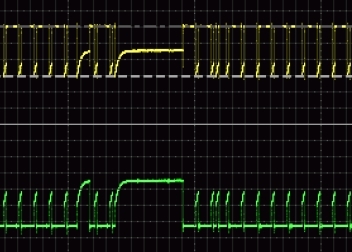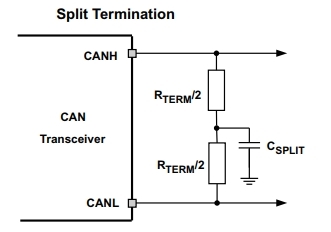Hi
Our customer tests this device on their board.
They found the slow rising waveform. (upper: CANH, lower:CANL)
I understand that there are CAN bus termination between CANL and CANH.
So that , the slow rising may be caused by the termination. (The following termination circuit is connected between CANL and CANH on their board.)
Do you think this waveform is normal?
The differential voltage (CANH-CANL) is normal (no communication error). However I think the rising edge is slower than expected.
Regards,
Koji Hamamoto




